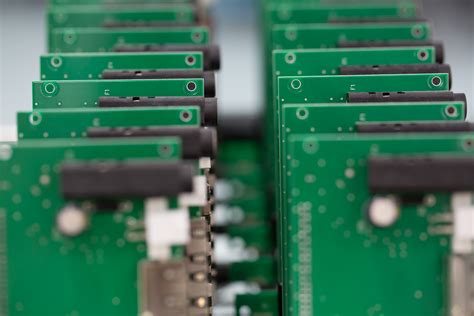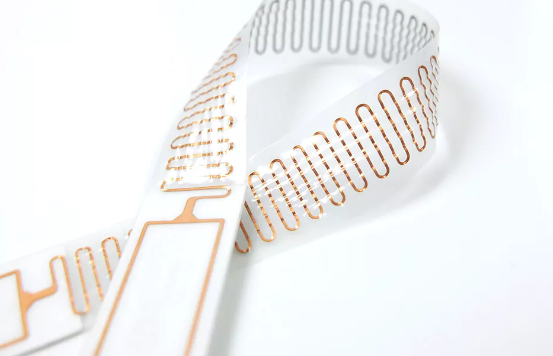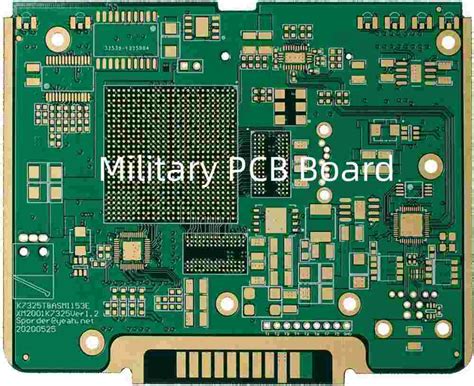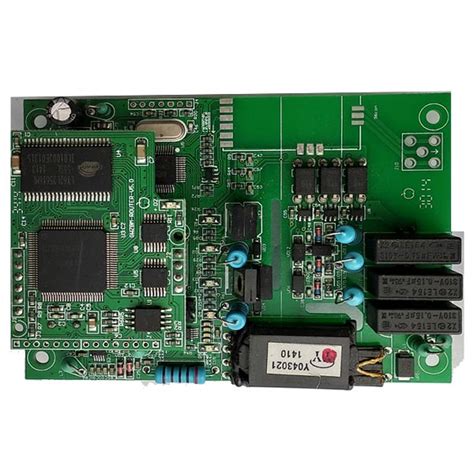Fmea for pcb assembly
Understanding The Basics Of FMEA In PCB Assembly
Failure Mode and Effects Analysis (FMEA) is a systematic approach used to identify potential failure modes within a system, assess their impact, and prioritize actions to mitigate risks. In the context of Printed Circuit Board (PCB) assembly, FMEA serves as a critical tool to enhance reliability and quality by preemptively addressing issues that could lead to product failures. Understanding the basics of FMEA in PCB assembly involves recognizing its role in the design and manufacturing processes, as well as its contribution to improving overall product performance.
Initially, FMEA in PCB assembly begins with a thorough examination of the design and manufacturing stages.
During the design phase, engineers utilize FMEA to identify potential failure modes related to component selection, circuit design, and layout. This proactive approach allows for the identification of vulnerabilities that could compromise the functionality of the PCB. For instance, incorrect component placement or inadequate thermal management can lead to overheating, which is a common failure mode in PCB assemblies. By addressing these issues early in the design process, engineers can implement corrective measures, such as optimizing component placement or enhancing heat dissipation mechanisms.
Transitioning to the manufacturing phase, FMEA continues to play a pivotal role in ensuring quality and reliability.
During this stage, potential failure modes related to soldering, assembly processes, and material handling are scrutinized. For example, improper soldering techniques can result in weak joints, leading to electrical failures. By identifying these risks, manufacturers can refine their processes, implement stringent quality control measures, and train personnel to adhere to best practices. Consequently, this reduces the likelihood of defects and enhances the overall robustness of the PCB assembly.
Moreover, FMEA facilitates communication and collaboration among cross-functional teams involved in PCB assembly.
By providing a structured framework for identifying and addressing potential failures, FMEA encourages dialogue between design engineers, manufacturing personnel, and quality assurance teams. This collaborative approach ensures that all stakeholders are aligned in their efforts to produce a reliable and high-quality product. Furthermore, it fosters a culture of continuous improvement, as teams are encouraged to regularly review and update the FMEA to reflect changes in design, materials, or processes.
In addition to its role in risk mitigation, FMEA also contributes to cost savings in PCB assembly.
By identifying potential failure modes early in the design and manufacturing processes, companies can avoid costly rework, recalls, and warranty claims. This proactive approach not only enhances product reliability but also improves customer satisfaction and brand reputation. Moreover, by prioritizing actions based on the severity, occurrence, and detection of potential failures, FMEA enables companies to allocate resources more effectively, focusing on areas that pose the greatest risk to product performance.
In conclusion, understanding the basics of FMEA in PCB assembly is essential for ensuring the reliability and quality of electronic products.
By systematically identifying and addressing potential failure modes, FMEA enhances the design and manufacturing processes, facilitates collaboration among cross-functional teams, and contributes to cost savings. As the demand for high-performance electronic devices continues to grow, the importance of FMEA in PCB assembly cannot be overstated. By integrating FMEA into their processes, companies can not only meet but exceed customer expectations, delivering products that are both reliable and robust.
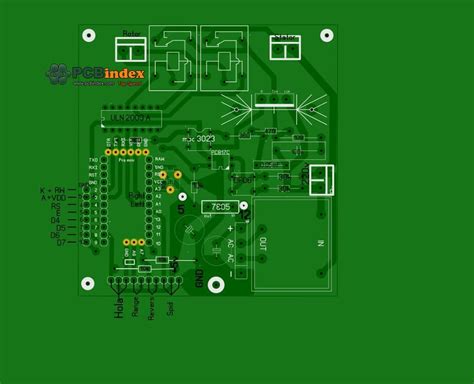
Implementing FMEA To Enhance PCB Assembly Quality
Failure Mode and Effects Analysis (FMEA) is a systematic approach widely used in various industries to identify potential failure modes, assess their impact, and prioritize actions to mitigate risks. In the context of Printed Circuit Board (PCB) assembly, implementing FMEA can significantly enhance quality by preemptively addressing issues that could compromise the functionality and reliability of electronic products. As the demand for high-performance and reliable electronic devices continues to grow, the importance of integrating FMEA into PCB assembly processes becomes increasingly evident.
To begin with, FMEA provides a structured framework for analyzing potential failure modes in PCB assembly.
This process involves a detailed examination of each step in the assembly process, from component placement to soldering and testing. By systematically identifying where failures might occur, manufacturers can better understand the vulnerabilities within their processes. For instance, during the component placement phase, potential failure modes might include incorrect component orientation or misalignment, which could lead to circuit malfunction. By identifying these risks early, manufacturers can implement corrective measures to prevent such issues from arising.
Moreover, FMEA facilitates a comprehensive evaluation of the effects of potential failures.
This involves assessing the severity of each failure mode, which helps prioritize the risks that require immediate attention. For example, a failure mode that could result in a complete device shutdown would be deemed more severe than one causing minor performance degradation. By quantifying the impact of each failure, manufacturers can allocate resources more effectively, focusing on mitigating the most critical risks first. This prioritization is crucial in ensuring that the most significant threats to product quality and reliability are addressed promptly.
In addition to identifying and prioritizing risks, FMEA also aids in determining the root causes of potential failures.
By understanding the underlying factors contributing to each failure mode, manufacturers can develop targeted strategies to eliminate or reduce these risks. For instance, if a common root cause of solder joint failures is identified as insufficient solder paste application, manufacturers can adjust their processes to ensure consistent and adequate paste deposition. This proactive approach not only enhances the quality of the PCB assembly but also reduces the likelihood of defects occurring in the final product.
Furthermore, the implementation of FMEA in PCB assembly promotes continuous improvement.
As new technologies and materials are introduced, the potential for new failure modes arises. By regularly updating the FMEA process, manufacturers can stay ahead of emerging risks and adapt their processes accordingly. This iterative approach ensures that quality improvements are sustained over time, leading to more reliable and robust electronic products.
In conclusion, the integration of FMEA into PCB assembly processes offers numerous benefits that contribute to enhanced product quality and reliability. By systematically identifying potential failure modes, assessing their impact, and prioritizing actions to mitigate risks, manufacturers can proactively address issues that could compromise the performance of electronic devices.
Moreover, the continuous improvement facilitated by FMEA ensures that manufacturers remain responsive to evolving challenges in the industry. As a result, implementing FMEA not only enhances the quality of PCB assemblies but also strengthens the overall competitiveness of manufacturers in the rapidly advancing electronics market.

Common Challenges In FMEA For PCB Assembly And How To Overcome Them
Failure Mode and Effects Analysis (FMEA) is a crucial methodology in the realm of Printed Circuit Board (PCB) assembly, aimed at identifying potential failure modes, assessing their impact, and prioritizing actions to mitigate risks. However, implementing FMEA in PCB assembly is not without its challenges.
One common challenge is the complexity of modern PCBs, which often feature densely packed components and intricate interconnections.
This complexity can make it difficult to identify all potential failure modes, as the interactions between components can lead to unforeseen issues. To overcome this, it is essential to adopt a systematic approach, leveraging cross-functional teams that include design engineers, manufacturing experts, and quality assurance personnel. By pooling diverse expertise, teams can more effectively identify and analyze potential failure modes.
Another challenge lies in the accurate assessment of the severity, occurrence, and detection ratings for each failure mode.
These ratings are subjective and can vary significantly depending on the experience and perspective of the team members involved. To address this, organizations should establish clear criteria and guidelines for rating severity, occurrence, and detection. This can be achieved by developing a standardized rating scale that is consistently applied across all FMEA activities. Additionally, conducting regular training sessions can help ensure that all team members have a common understanding of the rating process, thereby reducing variability and improving the reliability of the analysis.
Furthermore, the dynamic nature of PCB assembly processes can pose a challenge to maintaining an up-to-date FMEA.
As designs evolve and new technologies are introduced, the FMEA must be revisited and revised to reflect these changes. This requires a commitment to continuous improvement and a proactive approach to risk management. Implementing a robust change management process can facilitate this by ensuring that any modifications to the design or assembly process are promptly evaluated for their impact on the FMEA. Regularly scheduled FMEA reviews can also help keep the analysis current and relevant.
In addition to these challenges, the sheer volume of data generated during the FMEA process can be overwhelming.
Managing and analyzing this data effectively is crucial to deriving meaningful insights and making informed decisions. To tackle this, organizations can leverage specialized software tools designed to streamline the FMEA process. These tools can automate data collection, facilitate collaboration among team members, and provide advanced analytics capabilities to identify trends and patterns. By utilizing such tools, teams can enhance the efficiency and accuracy of their FMEA activities.
Finally, fostering a culture of open communication and collaboration is vital to overcoming challenges in FMEA for PCB assembly.
Encouraging team members to share their insights and experiences can lead to a more comprehensive understanding of potential failure modes and their effects. Regular meetings and workshops can provide a platform for discussion and knowledge sharing, helping to build a cohesive team that is committed to achieving the highest standards of quality and reliability.
In conclusion, while FMEA for PCB assembly presents several challenges, these can be effectively managed through a combination of systematic approaches, standardized processes, continuous improvement, and the use of advanced tools. By addressing these challenges head-on, organizations can enhance their ability to identify and mitigate risks, ultimately leading to more reliable and robust PCB assemblies.

The Role Of FMEA In Reducing PCB Assembly Failures
Failure Mode and Effects Analysis (FMEA) is a systematic approach that plays a crucial role in reducing failures in Printed Circuit Board (PCB) assembly. As the backbone of modern electronic devices, PCBs are integral to the functionality and reliability of a wide range of products, from consumer electronics to industrial machinery.
Therefore, ensuring their quality and reliability is paramount. FMEA serves as a proactive tool that helps identify potential failure modes, assess their impact, and prioritize actions to mitigate risks, thereby enhancing the overall reliability of PCB assemblies.
The process of FMEA begins with a thorough understanding of the PCB assembly process, which involves multiple stages such as design, component selection, soldering, and testing.
Each stage presents unique challenges and potential failure modes. For instance, during the design phase, issues such as inadequate trace width or improper component placement can lead to electrical failures. Similarly, during soldering, factors like insufficient solder paste or improper reflow profiles can result in poor connections or component damage. By systematically analyzing each stage, FMEA helps in identifying potential failure modes that could compromise the functionality of the PCB.
Once potential failure modes are identified, FMEA evaluates their effects on the overall system.
This involves assessing the severity of each failure mode, its likelihood of occurrence, and the ability to detect it before it causes significant harm. These factors are typically quantified using a risk priority number (RPN), which helps in prioritizing the failure modes that require immediate attention. For example, a failure mode with a high severity and likelihood of occurrence but low detectability would be assigned a high RPN, indicating the need for urgent corrective actions.
The insights gained from FMEA enable engineers to implement targeted strategies to mitigate risks.
For instance, design modifications can be made to address potential electrical failures, while process improvements can be introduced to enhance soldering quality. Additionally, FMEA can guide the development of robust testing protocols that ensure early detection of defects, thereby preventing faulty PCBs from reaching the market. By addressing potential issues at their source, FMEA not only reduces the likelihood of failures but also minimizes the costs associated with rework, warranty claims, and product recalls.
Moreover, FMEA fosters a culture of continuous improvement within organizations.
By regularly updating the analysis to reflect changes in design, materials, or processes, companies can stay ahead of emerging risks and maintain high standards of quality and reliability. This proactive approach not only enhances customer satisfaction but also strengthens the company’s reputation in the competitive electronics market.
In conclusion, FMEA is an indispensable tool in the quest to reduce PCB assembly failures.
By systematically identifying, evaluating, and mitigating potential failure modes, it enhances the reliability and quality of PCBs, ensuring that they meet the rigorous demands of modern electronic applications. As technology continues to evolve, the role of FMEA in PCB assembly will become increasingly important, helping companies navigate the complexities of design and manufacturing while delivering products that meet the highest standards of performance and reliability.

